
Hello everyone!
Today’s topics are: Looking for Erdnase; Card Illustration Tool; Remembering Volker Huber
These are The Magic Memories 101, gone online Sunday, December 4th, 2022, at 0:07h sharp.
Thank you to all who sent in comments about last week’s post about my “Giro d’Italia”, apparently my travel notes find the favor of some, and so I’ll keep posting them, provided I get to travel…
Looking for Erdnase
The Expert at the Card Table – Looking for Erdnase is a documentary-drama (2022, 84 Min.) by German director Hans-Joachim Brucherseifer (the film is in english). Currently it is available in a streaming format only, but will hopefully also be released as a commercial DVD later for us who collect such things.
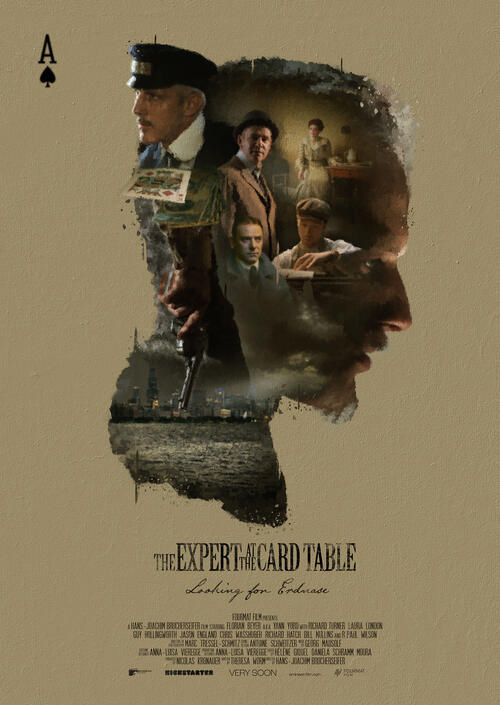
A few weeks ago we asked and were granted permission by the director to show the movie at our magic club in Basel: We paid €40 for this, and you could do the same for your club, as it is an unusual and worthwhile activity.
I gave a short introduction to set it into the historical context for those not so familiar with the book, then we showed the film (with popcorn and drinks :-), and after a short break I would answer questions and demonstrate various contents, techniques and effects.
Before you read further you might want to take the two and a half minutes necessary to watch the official trailer; to do so CLICK HERE .
A Classic of the Magic Literature
If you are interested in my introductory remarks to the movie, read on: There is no doubt that the book The Expert at the Card Table (Chicago 1902), briefly referred to as Erdnase, is a Classic of the magical literature, and nothing and nobody will ever take away this status from the book and his (her?) anonymous author. There are multiple reasons for this.
Erdnase marks the definite shift of the supremacy in the technical literature from the Old World to the New World.
Starting with Erdnase a large part of the important and influential literature comes from the USA (Sphinx magazine, Tarbell Course in Magic, Art of Magic, Greater Magic etc.), although several landmark books keep coming from European authors (d’Hotel, Conradi, Fischer, Willmann, Goldston, Maskelyne, Gaultier etc.).
Although there had been books of relative importance published in the USA before 1902, several of these were from European authors, such as the US-editions of Sach’s Sleight-of-hand, or some of Professor Hoffman’s works. Others, such as Roterberg’s New Era Card Tricks (1897) where greatly influenced by European sources (August Roterberg, as the name suggests, was of German descent, born in Hamburg, during the time of Carl Willmann, who published important and influential books and magazines during that time…).
But assuming that Erdnase was written by an US-author (who knows, maybe not…), for its details descriptions, the originality and quality of the content – techniques, tricks, presentations and theories – it clearly marks a turning point.
This can be understood by the illustrations: The first artwork trying to visualize the abstract descriptions, especially of sleight-of-hand, were woodcuts, and rather crude. These can be seen in the publications of the 15th, 16th, 17th, and up to the 18th century.
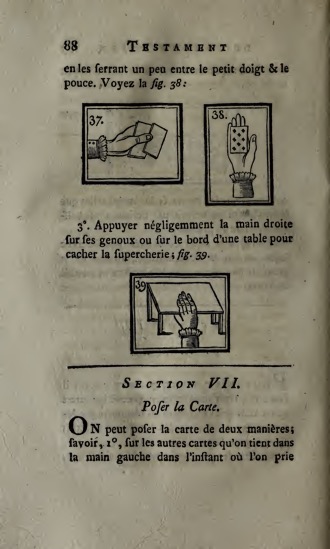
A better rendering occurred with the advent of copper etchings such as can be seen in the publications of Conradi, Hoffmann etc. However, the authors lacked the degree of insights into the subtleties of technical handling to provide the engraver with adequate hand models.
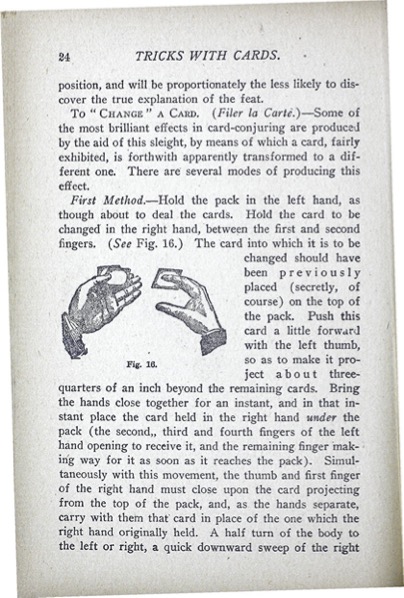
Additionally, photos have been used to facilitate the learning of book contents: One of the very first to make good use of it was C. Lang Neil in his landmark book The Modern Conjuror (1903). The photos show Charles Bertram and Mademoiselle Patrice (the author’s wife) perform in a Parlor setting, the preferred performance mode of the time – there is a guy out there who wrote a whole book just on card magic for parlor and stage 🙂 Photos are indeed very good to show how the performer stands and his body language and facial expression, but are usually inferior to depict hand-details.
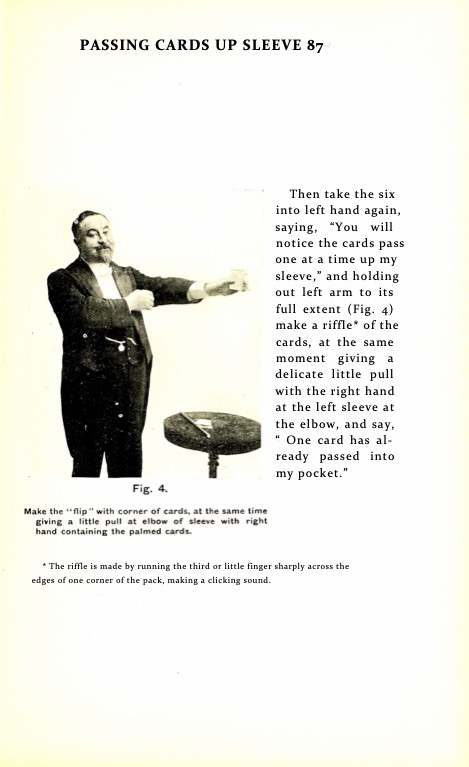
In Erdnase, however, we find simple but very accurate hand-made drawings that depict with baffling precision the degree of detail necessary to master the sleight correctly.
At some point in the research of the anonymous author, Martin Gardner was able to locate the man who made the drawings for Erdnase, and to get him to attend a magic convention, where even stars of magic, such as Dai Vernon, brought their copies to have signed by M. D. Smith. The latter, unfortunately, due to his age and the fact that over four decades had elapsed since he had done the drawings, was unable to provide any clues that would allow the disclosure of who the author of Erdnase was.
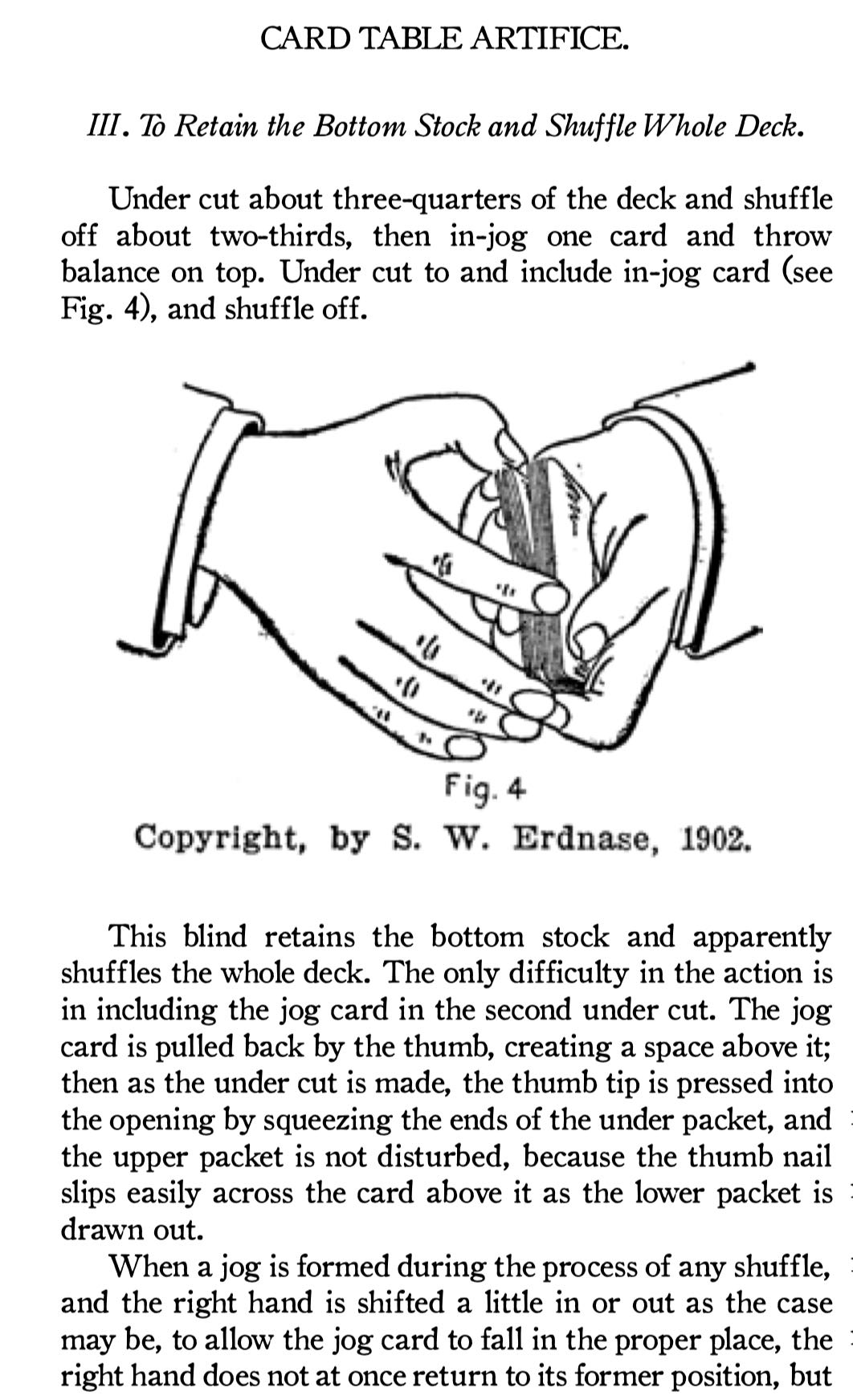
Erdnase is possibly the only magic book to have generated such a large amount of secondary literature, i.e., works about the book Erdnase.
As a matter of fact, I am not able right now to name any other book other than those by Hofzinser and Robert-Houdin that have generated secondary literature at all, at least not in that number. That’s quite an achievement, most of it, thought, admittedly due to the anonymity of the author. This latter aspect is in my opinion the key factor that keeps Erdnase in the front row up to this very day, as I do not think the pure content deserves this status (see below for my reasoning on this).
Also, the anonymous author of Erdnase has brought about several biographies (!), which sounds like a paradox: How can you write a biography about someone you don’t know?
In Erdnase we find one of the first attempts to establish a coherent terminology of card magic (although it lacks the maps of hands and the deck, something which I consider basic, but it was not until Card College 1992 that this was done in detail). Although in Erdnase we find what I think is a good and practical terminology, not all made it into the vocabulary of future authors of magic books on card magic. On the contrary, it is a sign of immaturity that most authors keep reinventing their own terms, or use such redundant terms as “long side” instead of simple “side” (a side is long, the other one is the end, and it isn’t short either). And then there have been some ridiculous terms that were created seemingly out of nowhere, such as “Biddle Grip”, as if Mr. Biddle had invented holding a deck by its ends… I know, this is a favorite quibble of mine 🙂
In my introduction I also mentioned and showed various editions in English and other languages, as well as videos and books on Erdnase.
Unnecessary for the Beginner
The question most will obviously ask is: Do I need to read Erdnase?
My short answer is: No – you can become world champion of card magic and the highest paid performer in the universe without even knowing that Erdnase exists.
The long answer is a bit more complicated, as everything in life…
There is nothing in Erdnase, not one single idea, technique, trick or presentation that you can’t either find in another more modern book, and better explained and illustrated at that, or that addresses a problem that cannot be resolved with another approach, be it technical or presentational, explained in the modern literature (including magazines, lectures, videos, podcasts).
I would even go so far as to say that in the fist five to ten years you’d better stay away from Erdnase, as it might confuse and discourage you. There are much better sources to get to black-belt level with cards!
Now, once you’ve spent your 10’000 hours, or about ten years, practicing card magic every day, that’s when you might start to get an interest into the higher spheres of magic: history, biographies, theory.
This is also when studying the ancient, hidden sources of magic can give you additional insights, produce valuable connections between pieces of information which up to then were scattered units in the infinite universe of magic, especially in the galaxy of card magic. You will start to create interfaces and recognize hitherto invisible networks and patterns, and cross-reference seemingly unrelated topics.
And suddenly the whole becomes more than the sum of its parts in which you were swimming around aimlessly during the first ten years.
To my understanding there are two factors that keep Erdnase topical.
First, many experts still talk about the book in the highest tones. Yes, it still is a good book, but in the meantime there are much better books on every aspect covered in Erdnase: Hugard & Braue, Vernon, Marlo, Forte, Tamariz, Ascanio, to mention just a few luminaries. I guess, that many of these experts – and they do have my full admiration and respect – simply need a belief system, like many human beings need that in other areas of life (politics, economy, religion, etc.)
Second, the author is not known. I would bet my first edition of Erdnase (which I still need to find…) that the moment the author becomes known, 96.45% of the fascination will vanish like a cheap brand of margarine on a hot summer day, to paraphrase Paul Harris (who owes nothing of his genius to Erdnase). Just imagine for a moment that someone can conclusively prove that, e.g., Charles Bertram (with the aid of Charlier) was the author. So what? Puff – dream over, time to get up.
Of course this raises the question if, in order to become proficient in magic, you need to have read all those “Classics” by Ozanam, Guyot, Decremps, Ponsin, Sachs, Goldston, Hoffman etc.
What is your opinion?
I’ll give you a clue: I have not read any of these from cover to cover, although I own them all and have looked into them here and there. But I have read Hofzinser, Bertram, Maskelyne and Robert-Houdin from A to Z, several times.
Why? (Clue: Some authors are academics, others real performers…).
To Sum it up
Anyone interested in card magic, and in Erdnase in particular, will enjoy watching this documentary-movie.
At some point the director might listen to the feedback he’ll certainly receive, mostly positive, I hope, but still do what Jay Marshall always answered to performers who asked him for advice on how to improve their act: “Cut, cut, cut.” The 90 minutes cut down to 75 minutes will make this a better film, especially getting rid of redundant and irrelevant scenes towards the end.
Reminder: All of this is purely my personal opinion 🙂
Card Illustration Tool
Chris Wasshuber from library.com just sent a mail discussing a programme he devised that allows you to make drawings depicting playing cards: Fans, Spreads, etc. Very useful, it seems to me.
The tool is free to use for anyone, provided you credit Chris and his lybrary.com (“library” is misspelled on purpose as “lybrary” – I assume because the domaine name was already taken).
If you want to know more about this, CLICK HERE.
Remembering Volker Huber (1941 – 2022)
The sad news came in of Volker Huber passing on December 1st. He was one of the most important collectors and historians in our specialty.
I had the good fortune of meeting him on several occasions, with extensive dinners and “sobre-mesas”, the chatter after dinner, at the dinner table – an important tradition of the Old Wold that unfortunately got lost in the New World, where the waiter brings you the check before you even finish your Espresso, a culture shock for any European crossing for the first time the Atlantic.
On two occasions I visited with Volker at his home near Frankfurt. He had bought TWO houses, because one was not enough to host his extensive collection, which went from magnificent paintings, sculptures, books, props to what have you, obviously all related to magic, and all of the highest caliber. My estimate is that his collection is worth close to ten million Dollars.
However, the most remarkable thing about all this to me was that Volker could tell me something about every and each of the exhibits in his collection, its provenience, how he got it, what role it played in the context of magic history etc. This is, in my opinion, the most important thing when you collect. I mean, any idiot with lots of money could have bought what Volker had, but to know what Volker knew, well, that’s another conversation.
I am by no definition of the term a collector, but meeting him taught me to look at these “old things” differently. He was a true gentleman and a great, great connoisseur, and I will miss him, and so will the magic world.
When I visited with him he showed me his complete Hofzinser collection, which is breathtaking. To me, of course, the most impressive thing was to see decks of cards and tricks cards originally used by Hofzinser himself, and being able to touch and handle them. I wish a spark of Hofzinser’s genius could have sprung over to me 🙂 Anyway, what a treat.
I then had the privilege of spending hours in his eclectic library, handling and reading (perusing) those old books, some of which I had only heard of.
At some point in our conversations I told Volker I wanted to make a study of the history of card magic. Volker was very enthusiastic about and agreed that a serious study would only have a chance if it was limited to an area of magic, such as card magic. And he was willing to let me use his library as much as I wanted, which shows just part of his incredible generosity.
I have started to summarize the content of dozens of old magic books in Italian, French, German, Spanish, Portuguese and English, being in the fortunate position of reading these languages, but need to do a lot more. Clearly, this is a project that needs several years of research and writing time, and since it will hardly be a commercial success, but I need to make a living from my work, there is only a slim change that this will ever by accomplished, at least not by me…
It is to be greatly regretted that in 2022 we still have no organization nor foundation that would provide the funds, infrastructure and logistics necessary to put such a project into practice. I’ll leave it at this, for the moment…
In the photo below you can see Volker Huber standing among the other participants of the German History Conference that took place in Vienna (Austria) in summer 2015.
Magic Christian (do you find him in the photo?) had organized a visit to the oldest playing card manufactory in Vienna, Piatnik, for whom he has created so many wonderful special decks, including a three-deck-box of Hofzinser Magic Cards (I have a still sealed extra set to sell at $ 100 including shipping worldwide, if anyone is interested).
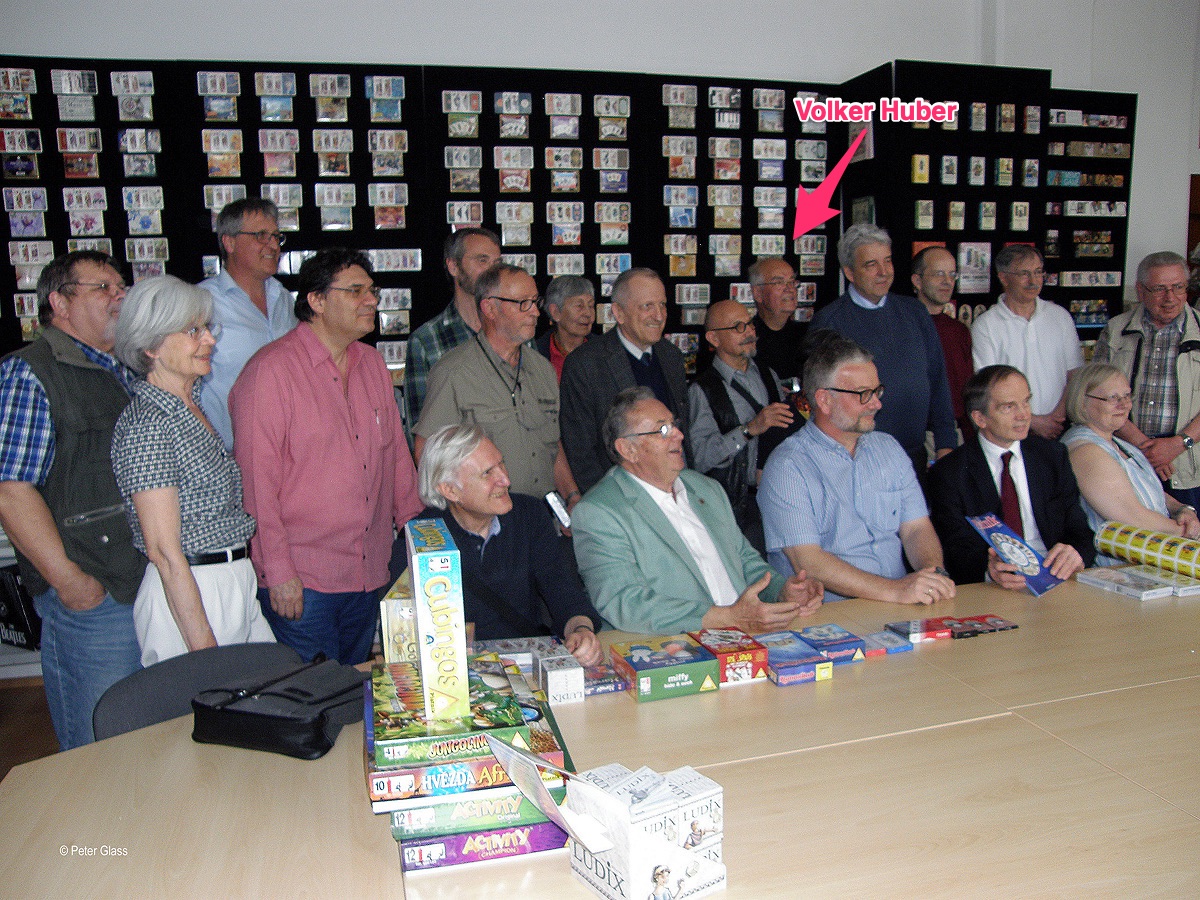
If you would like to know more about Volker, a bit about his life and a few of his achievements, Wittus Witt has made up a special issue of his Magische Welt (16 pages) with some lovely photos and worthwhile information to be freely downloaded – for the PDF in English CLICK HERE (on the same page there is also the original German version if you prefer).
Wish everyone an excellent week!
All the best,
Roberto Giobbi
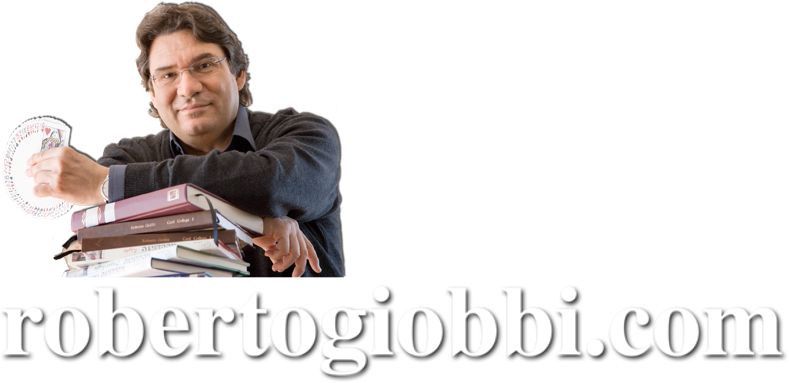
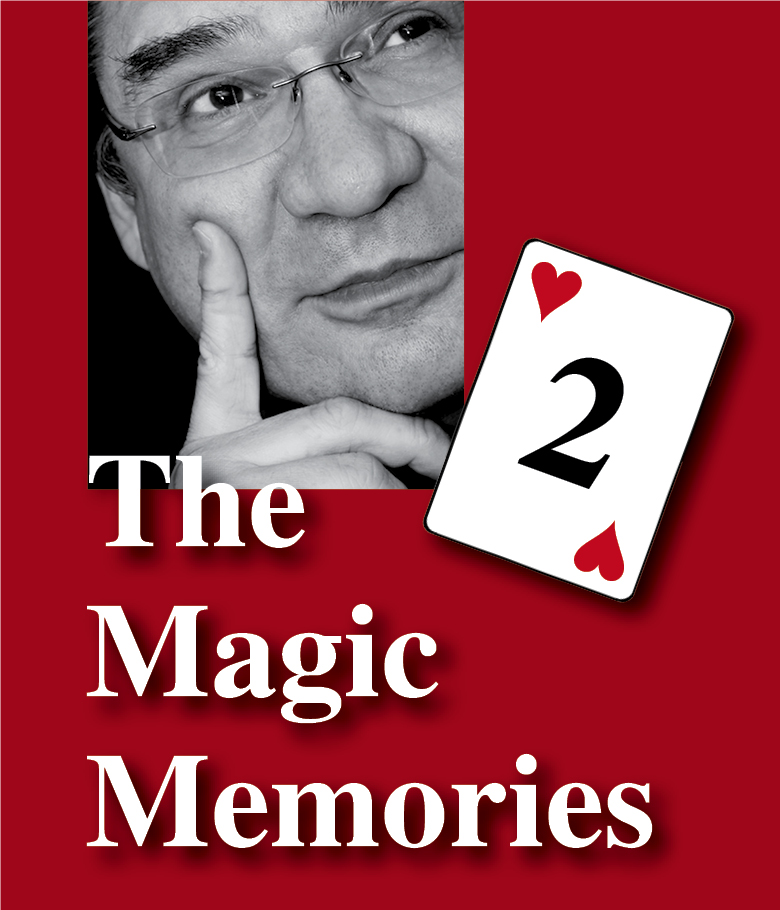
The Erdnase film left out W.E. Sanders as a viable candidate. This remarkable man was discovered by the late David Alexander, another remarkable man and magician. David was also a private detective and utilized what he had learned in that field to find Erdnase. He first created a profile and eventually found what he believed is the likeliest candidate. There is too much circumstantial evidence involving Sanders to dismiss him as Erdnase. As David wrote: “At some point the idea of endless coincidences becomes unreasonable and the evidence, even though circumstantial, becomes overwhelming.”